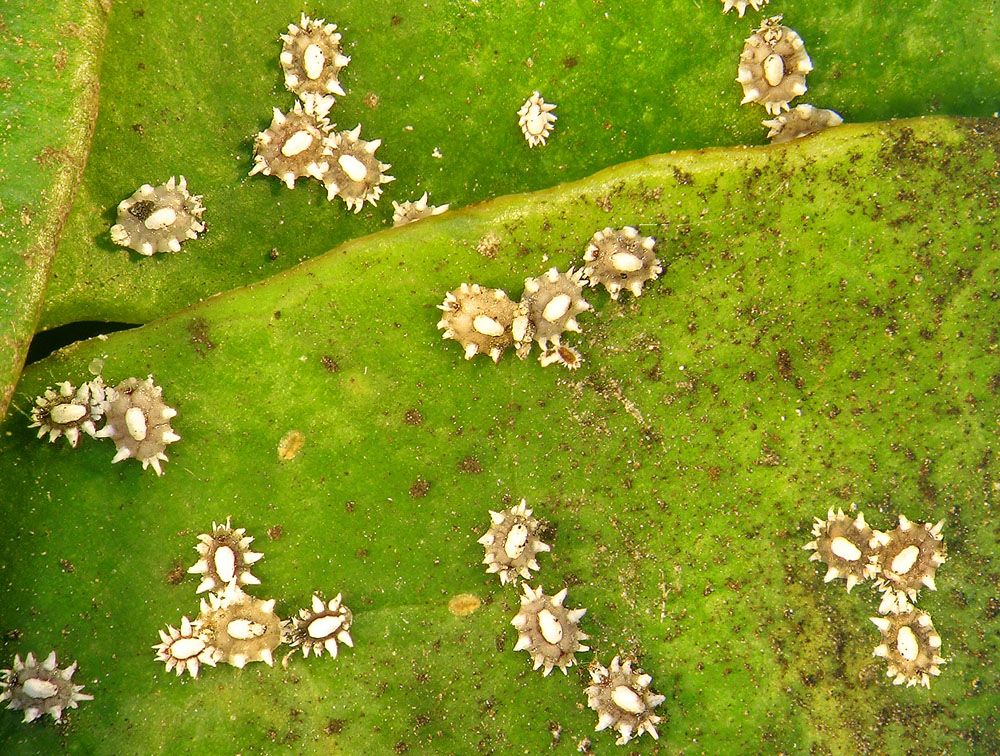
Wax Scales – Ceroplastes spp.
Wax Scales – Ceroplastes spp.
Common Name: Wax Scales
Latin Name: Ceroplastes spp.
Appearance:
Female wax scales are hemispherical and coated in thick, greasy wax. Their main hue is light grey. Mature females measure 1/12 to 1/3 inch long. Their bodies are covered with waxy ridges and feature white or black indentations or speckles. Nymphs are reddish, yet their bodies are coated in conical, stellate (star-shaped), or rosette-shaped wax plates.
Host plant:
Throughout its range, this scale is considered a pest of citrus (Citrus spp.). It also infests a range of other plants, including avocado, Persea americana, crape myrtle, Lagerstroemia spp, Cedrus deodara (deodar cedar)
Territory:
The wax scale is thought to have originated in the northern Neotropical area and is now found worldwide.
Damages caused by Wax Scales:
Wax scales are a rare pest of a variety of ornamentals. Ceroplastes spp. may make a sticky mess by excreting excessive honeydew on various hosts. These infestations seldom, if ever, damage plant health.
Life history and habits:
The winter is spent as adult ladies. Males are extremely rare or unknown in certain species. The eggs are round and orange in colour, and they fill the interior of the female scale insect. Hundreds of eggs fall out when scale insects are removed in the spring (April). Eggs hatch in around 3 weeks for 2 to 3 weeks. First-stage nymphs, called crawlers, emerge from eggs and crawl to and settle on the leaves, twigs and stems of host plants. After landing, nymphs produce wax in tufts around the body, giving these scale insects a star-like appearance. Every year, there may be two or more generations.
